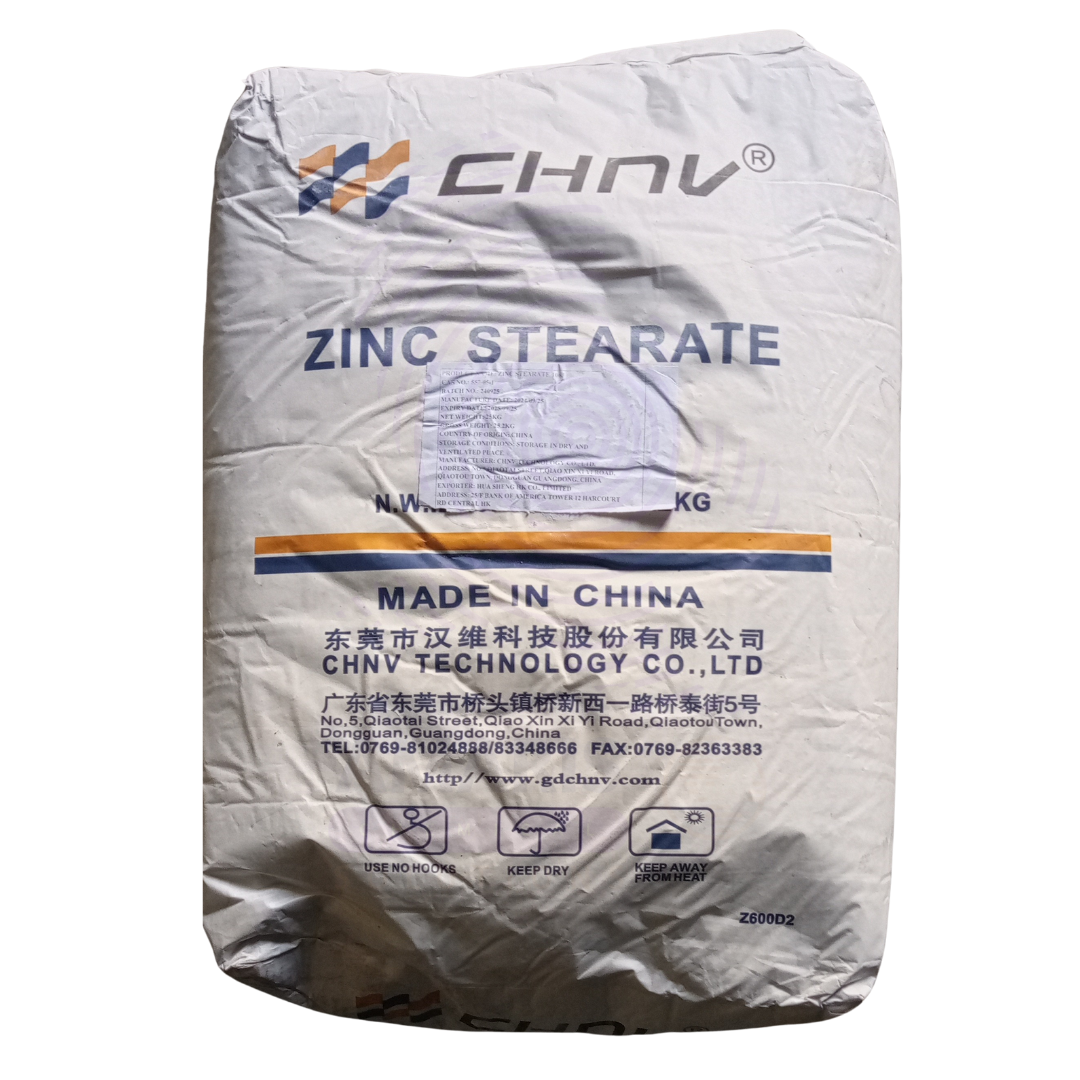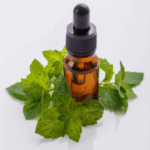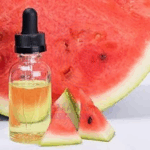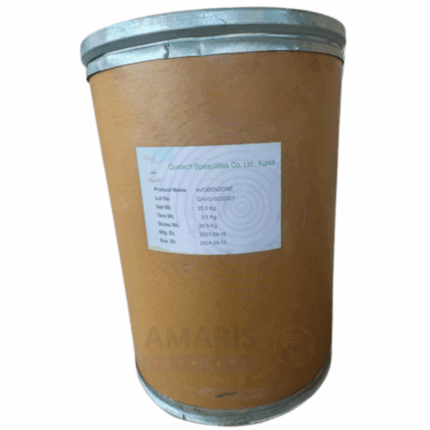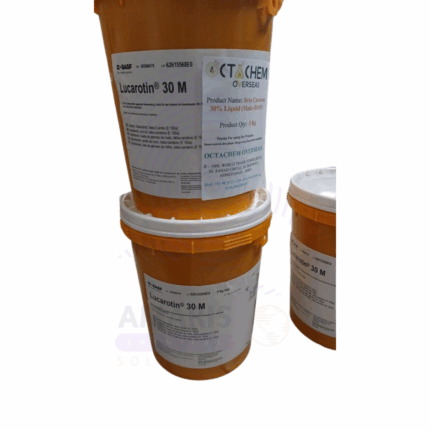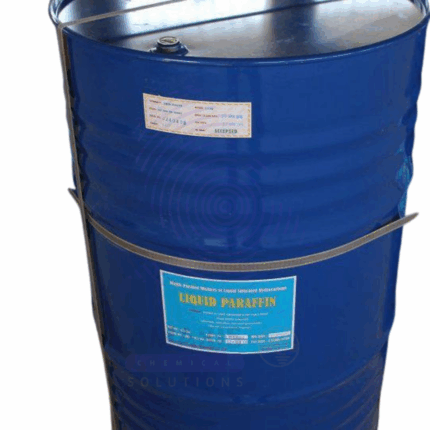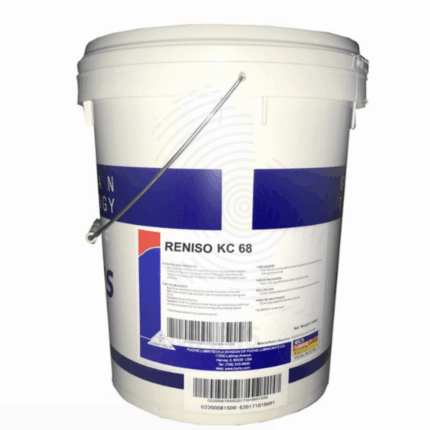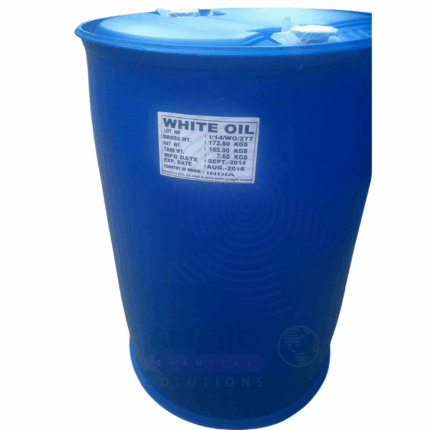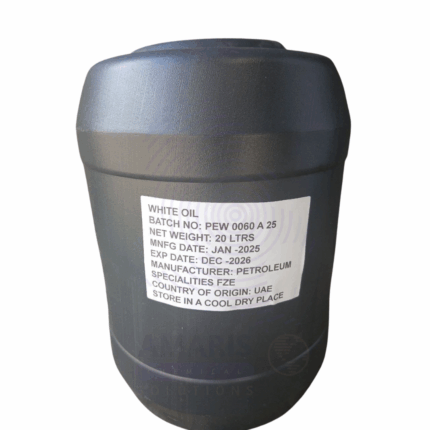Zinc Stearate
Whatsapp Order
Zinc Stearate is a fine, white powder composed of zinc salts of stearic acid. It is a hydrophobic, non-toxic metal soap widely used as a lubricant, release agent, and stabilizer in plastics, rubber, paints, coatings, and personal care industries. Known for its excellent mold-release properties and compatibility with a range of polymers, Zinc Stearate offers thermal stability and processing efficiency across industrial applications.
Description
Table of Contents
Toggle
Zinc Stearate
Primary Uses
- Plastics Industry
- Mold Release Agent: Prevents thermoplastics (e.g., PVC, ABS, PS) from sticking to molds.
- Processing Aid: Improves flow and dispersion during extrusion and molding.
- Stabilizer: Acts as a heat stabilizer in PVC formulations, often in combination with calcium stearate.
- Rubber Industry
- Lubricant: Reduces internal friction during rubber processing and extrusion.
- Release Agent: Facilitates demolding of rubber parts and profiles.
- Activator: Enhances vulcanization when used with sulfur-based systems.
- Paints & Coatings
- Matting Agent: Reduces gloss and improves texture in paints, lacquers, and powder coatings.
- Dispersing Aid: Improves pigment dispersion and prevents caking in formulations.
- Cosmetics & Personal Care
- Bulking & Opacifying Agent: Used in powders, creams, and lotions to provide smooth texture and opacity.
- Water Repellency: Enhances moisture resistance in formulations. (Use restricted to cosmetic/personal care grades)
Secondary Uses
- Pharmaceuticals
- Tablet Lubricant: Used as a dry lubricant in tablet manufacturing to prevent sticking. (Only when specified for pharmaceutical grade)
- Construction Materials
- Hydrophobic Additive: Used in plasters and cement to increase water resistance and spreadability.
- Textile Industry
- Softening Agent: Imparts softness and anti-static properties to fabrics in specialty treatments.
- Paper Industry
- Surface Coating Aid: Enhances gloss and water resistance in certain coated papers and paperboard.
- Polishes and Wax Products
- Thickener & Binder: Improves consistency and adhesion in furniture and automotive waxes/polishes.
KEY PRODUCT FEATURES
1. Basic Identification Attributes
- Chemical Name (IUPAC): Zinc octadecanoate
- Common/Trade Name: Zinc Stearate
- CAS Number: 557-05-1
- HS Code: 2915.70.00
- Synonyms: Zinc distearate, stearic acid zinc salt
2. Physical & Chemical Properties
- Physical State: Fine, hydrophobic powder
- Color & Odor: White to off-white; slight fatty odor
- Melting Point: >120 °C (softens)
- Solubility: Insoluble in water and alcohol; soluble in aromatic hydrocarbons and chlorinated solvents
- Density: ~1.1 g/cm³
- pH (10% dispersion): ~7.5–8.5
3. Safety & Hazard Attributes
- GHS Classification:
- Not classified as hazardous
- Dust may cause mild eye or respiratory irritation
- Toxicity: Low toxicity; considered safe under normal handling conditions
- Exposure Limits: No specific limits; general dust exposure limits apply
4. Storage & Handling Attributes
- Storage Conditions: Store in a cool, dry, well-ventilated area away from moisture and oxidizers
- Container Type: 25 kg bags or fiber drums with liners
- Shelf Life: Up to 2 years under proper storage conditions
- Handling Precautions: Minimize dust formation; use standard PPE
5. Regulatory & Compliance Attributes
- Complies with REACH, OSHA, and TSCA regulations
- Listed in international chemical inventories (EINECS, DSL, AICS, etc.)
- Manufactured under ISO 9001 and ISO 14001 standards
- GMP-compliant production when intended for cosmetic or pharmaceutical use
- RoHS-compliant for electronics and plastics
- Conforms to FDA and EU standards for indirect food contact (when applicable)
6. Environmental & Health Impact
- Biodegradability: Biodegradable in the environment
- Ecotoxicity: Low; not expected to be hazardous to aquatic life
- Bioaccumulation: Negligible
SAFETY HANDLING PRECAUTIONS
Safety Handling Precautions
- PPE Required: Gloves, goggles, dust mask if airborne particles are present
- Handling Guidelines: Use local exhaust ventilation; prevent dust accumulation
- Storage Measures: Keep sealed in original containers; avoid exposure to high humidity
First Aid Measures
- Inhalation: Move to fresh air; seek medical help if respiratory symptoms persist
- Skin Contact: Wash thoroughly with soap and water
- Eye Contact: Rinse with water for at least 15 minutes
- Ingestion: Not expected to be toxic; rinse mouth and consult a physician if large amounts are ingested
Firefighting Measures
- Fire Hazards: Not flammable but combustible as a dust cloud
- Extinguishing Media: Dry chemical, foam, CO₂, or water spray
- Hazardous Combustion Products: May emit zinc oxide and carbon oxides
Related products
Avobenzone
Avobenzone (chemical name: Butyl Methoxydibenzoylmethane) is an oil-soluble organic compound widely used as a UVA filter in sunscreen formulations. It is valued for its ability to absorb a broad spectrum of ultraviolet A (UVA) rays (320–400 nm), protecting the skin from premature aging and damage caused by sun exposure. Avobenzone is often combined with other UV filters to provide broad-spectrum sun protection. It is a pale yellow liquid or crystalline powder, soluble in oils and alcohols but unstable in sunlight unless stabilized with other agents.
Beta Carotene
Beta Carotene is a concentrated formulation of beta carotene, a naturally occurring red-orange pigment found in plants and fruits. It is a precursor to vitamin A and a potent antioxidant that helps protect cells from oxidative damage. This product, typically suspended in an oil base or suitable carrier, is widely used as a natural colorant, nutritional supplement, and cosmetic ingredient. Beta Carotene 30% SUN offers enhanced stability under sunlight exposure, making it ideal for food, feed, and cosmetic applications where light stability is critical.
Liquid Paraffin
Liquid Paraffin, also known as mineral oil, is a clear, colorless, odorless, and tasteless petroleum-derived liquid hydrocarbon. It is composed primarily of saturated hydrocarbons and is highly refined to meet pharmaceutical and cosmetic grade standards. Liquid Paraffin is widely used for its lubricating, moisturizing, and protective properties. It is non-volatile, chemically stable, and insoluble in water, making it ideal for applications in personal care, pharmaceuticals, and industrial lubrication.
Medium Oil
Medium Oil 45/55 is a petroleum-derived mineral oil that falls within the mid-range viscosity category, typically comprising a blend of 45% light and 55% heavy paraffinic fractions. Known for its excellent solvency, thermal stability, and lubrication properties, Medium Oil is widely used in rubber processing, industrial applications, and chemical blending. It appears as a clear to pale amber liquid with a neutral odor, and it demonstrates good compatibility with various elastomers and polymers. This oil enhances the flexibility, softness, and processing efficiency of rubber compounds while maintaining stability under heat and mechanical stress.
Supplied in 180 kg industrial-grade drums, Medium Oil (45/55) is ideal for large-scale use in manufacturing and processing environments.
Renisco KCS 68
Renisco KCS 68 is a clay-coated, controlled-release potassium sulfate fertilizer granule containing approximately 68% K₂O equivalent. The clay coating regulates potassium release, aligning nutrient availability with plant uptake over an extended period. This minimizes leaching and enhances nutrient-use efficiency. Renisco KCS 68 is widely used in horticulture, agriculture, turf management, and specialty crop production.
Renolin B
Renolin B is a high-quality mineral oil-based lubricant commonly used as a hydraulic oil, compressor oil, and general-purpose industrial lubricant. It features excellent oxidation stability, good thermal properties, and effective anti-wear performance. Renolin B is suitable for a wide range of industrial machinery and equipment, providing reliable lubrication, corrosion protection, and extended service life under moderate operating conditions
Silicon Emulsion
Silicon Emulsion is a stable, water-based emulsion of polydimethylsiloxane (PDMS) or other silicone fluids, commonly used for lubrication, gloss enhancement, release, water repellency, and surface conditioning. It appears as a milky-white, viscous liquid and is non-toxic, non-flammable, and easy to handle. Due to its excellent spreadability and low surface tension, it is widely used in industries ranging from automotive and textiles to agriculture, construction, and cosmetics.
White Oil
White Oil, also known as Mineral Oil or Liquid Paraffin, is a highly refined, clear, odorless, and tasteless petroleum-derived oil. It is composed of saturated aliphatic hydrocarbons and is available in various viscosity grades depending on the intended application. The product is extensively purified to remove aromatic hydrocarbons, sulfur compounds, and other impurities, making it suitable for use in personal care, pharmaceutical, food, and industrial applications. White Oil is prized for its excellent lubricity, moisture barrier function, chemical stability, and non-comedogenic properties.
White Oil supplied in a 162 kg drum format is typically used in bulk manufacturing and industrial-scale processing across multiple sectors.


 Preservatives(food)
Preservatives(food) Flavor Enhancers
Flavor Enhancers Acidulants
Acidulants Sweeteners
Sweeteners Antioxidants
Antioxidants Colorants(food)
Colorants(food) Nutraceutical Ingredients (food)
Nutraceutical Ingredients (food) Nutrient Supplements
Nutrient Supplements Emulsifiers
Emulsifiers
 Collectors
Collectors Dust Suppressants
Dust Suppressants Explosives and Blasting Agents
Explosives and Blasting Agents Flocculants and Coagulants
Flocculants and Coagulants Frothers
Frothers Leaching Agents
Leaching Agents pH Modifiers
pH Modifiers Precious Metal Extraction Agents
Precious Metal Extraction Agents
 Antioxidants(plastic)
Antioxidants(plastic) Colorants (Pigments, Dyes)
Colorants (Pigments, Dyes) Fillers and Reinforcements
Fillers and Reinforcements Flame Retardants
Flame Retardants Monomers
Monomers Plasticizers
Plasticizers Polymerization Initiators
Polymerization Initiators Stabilizers (UV, Heat)
Stabilizers (UV, Heat)
 Antifoaming Agents
Antifoaming Agents Chelating Agents
Chelating Agents Coagulants and Flocculants
Coagulants and Flocculants Corrosion Inhibitors
Corrosion Inhibitors Disinfectants and Biocides
Disinfectants and Biocides Oxidizing Agents
Oxidizing Agents pH Adjusters
pH Adjusters Scale Inhibitors( water)
Scale Inhibitors( water)
 Antioxidants(cosmetic)
Antioxidants(cosmetic) Emollients
Emollients Fragrances and Essential Oils
Fragrances and Essential Oils Humectants
Humectants Preservatives
Preservatives Surfactants(cosmetic)
Surfactants(cosmetic) Thickeners
Thickeners UV Filters
UV Filters
 Fertilizers
Fertilizers Soil Conditioners
Soil Conditioners Plant Growth Regulators
Plant Growth Regulators Animal Feed Additives
Animal Feed Additives Biostimulants
Biostimulants Pesticides (Herbicides, Insecticides, Fungicides)
Pesticides (Herbicides, Insecticides, Fungicides)
 Active Pharmaceutical Ingredients (APIs)
Active Pharmaceutical Ingredients (APIs) Excipients
Excipients Solvents(pharmaceutical)
Solvents(pharmaceutical) Antibiotics
Antibiotics Antiseptics and Disinfectants
Antiseptics and Disinfectants Vaccine Adjuvants
Vaccine Adjuvants Nutraceutical Ingredients (pharmaceutical)
Nutraceutical Ingredients (pharmaceutical) Analgesics & Antipyretics
Analgesics & Antipyretics
 Analytical Reagents
Analytical Reagents Solvents(lab)
Solvents(lab) Chromatography Chemicals
Chromatography Chemicals Spectroscopy Reagents
Spectroscopy Reagents microbiology-and-cell-culture-reagents
microbiology-and-cell-culture-reagents Molecular Biology Reagents
Molecular Biology Reagents Biochemical Reagents
Biochemical Reagents Inorganic and Organic Standards
Inorganic and Organic Standards Laboratory Safety Chemicals
Laboratory Safety Chemicals Specialty Laboratory Chemicals(Special Laboratory Equipment)
Specialty Laboratory Chemicals(Special Laboratory Equipment)
 Demulsifiers
Demulsifiers Hydraulic Fracturing Fluids
Hydraulic Fracturing Fluids Scale Inhibitors(oil)
Scale Inhibitors(oil) Surfactants(oil)
Surfactants(oil) Drilling Fluids
Drilling Fluids
 Dyes and Pigments
Dyes and Pigments Bleaching Agents
Bleaching Agents Softening Agents
Softening Agents Finishing Agents
Finishing Agents Antistatic Agents
Antistatic Agents
 Admixtures
Admixtures Waterproofing Agents
Waterproofing Agents Sealants and Adhesives
Sealants and Adhesives Curing Compounds
Curing Compounds Concrete Repair Chemicals
Concrete Repair Chemicals Anti-Corrosion Coatings
Anti-Corrosion Coatings
 Surfactants(cleaning)
Surfactants(cleaning) Builders
Builders Enzymes
Enzymes Solvents (Cleaning)
Solvents (Cleaning) Fragrances
Fragrances
 Electronic Chemicals
Electronic Chemicals Catalysts
Catalysts Lubricants
Lubricants Photographic Chemicals
Photographic Chemicals Refrigerants
Refrigerants Automotive chemicals
Automotive chemicals Pyrotechnic Chemicals
Pyrotechnic Chemicals
 Biodegradable Surfactants
Biodegradable Surfactants Bio-based Solvents
Bio-based Solvents Renewable Polymers
Renewable Polymers Carbon Capture Chemicals
Carbon Capture Chemicals Wastewater Treatment Chemicals
Wastewater Treatment Chemicals
 Pigments
Pigments Solvents(paint)
Solvents(paint) Specialty Coatings
Specialty Coatings Binders/Resins
Binders/Resins Additives
Additives Driers
Driers Anti-Corrosion Agents
Anti-Corrosion Agents Functional Coatings
Functional Coatings Application-Specific Coatings
Application-Specific Coatings
 Fresh Herbs
Fresh Herbs Ground Spices
Ground Spices Whole Spices
Whole Spices Spice Blends
Spice Blends Dried Herbs
Dried Herbs
 Leavening Agents
Leavening Agents Dough Conditioners
Dough Conditioners Flour Treatments
Flour Treatments Fat Replacers
Fat Replacers Decoratives
Decoratives Preservatives(baking)
Preservatives(baking)
 Plasticizers & Softeners
Plasticizers & Softeners Reinforcing Agents
Reinforcing Agents Adhesion Promoters
Adhesion Promoters Vulcanizing Agents
Vulcanizing Agents Antidegradants
Antidegradants Blowing Agents
Blowing Agents Fillers & Extenders
Fillers & Extenders Accelerators & Retarders
Accelerators & Retarders